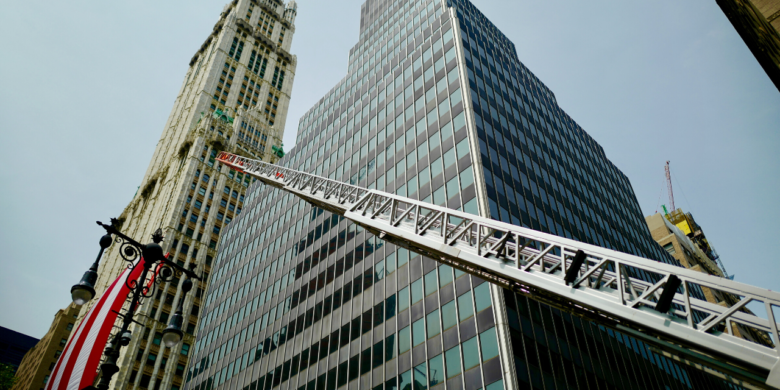FDNY Retirement and Pension Plan, What You Need to Know

As a New York City firefighter, you are one of the few individuals left in the United States that can retire and receive a monthly pension sponsored by your employer. Still, you’ll need to know your retirement options since you’ll still have many choices while planning along the way. FDNY retirement pension plans allow you to defer additional money. That means you can fund your retirement by using your Deferred Compensation. Your Deferred Compensation options include a 457(b) plan and a 401(k) option.
New York City Firefighters are a part of the New York State and Local Retirement System (NYSLRS), meaning you have a defined benefit plan. Still, your retirement pension will be determined on several items, including your tier, retirement plan, any accumulated service credit, your age when you retire, and your final average salary (FAS).
Even with a defined benefit plan, retirement is a major life adjustment and one of the most important changes you’ll ever incur in your life. Since it’s best to reduce the amount of uncertainty you might be feeling about this decision, it’s time to start planning. If you can plan appropriately for your retirement, you’ll have the tools and education to make the best choices about this new phase in your life. That way, you’ll be well-prepared by the time you plan to retire.

Organize a Timeframe
Organizing a timeframe will help you take steps towards appropriate planning. By making an income timeline based on your FDNY retirement pension, you’ll be more prepared for the changes you are likely to incur. Remember, FDNY retirement pensions do not receive any cost of living adjustments, so you’ll need to be ultra-prepared. For example, suppose you plan to retire in your early fifties, like most FDNY members do. In that case, you’ll need to factor in different retirement factors than you would if you were to retire in your sixties as a standard corporate employee. Firefighters typically retire earlier than those in other careers, so you’ll need to ensure that your FDNY retirement plan fits your goals.
So, planning for your retirement as an FDNY member requires different planning features when assessing your retirement plan. You may want to begin by comparing your take home pay and how you live while you are still working. That means you should keep an eye on your static pension number and your planned retirement date while considering the added potential for inflation while preparing for your retirement. Watching these numbers over five years will demonstrate what your contribution pension needs to look like if you want to maintain your current lifestyle.
When you are eighteen months from your eligible retirement date, it’s a wonderful idea to request a retirement benefit estimate from your FDNY retirement pension plan. The best way to accomplish this is by completing a Request for Estimate form (RS6030). When you complete this information, you’ll also need to provide some data, including when you plan to retire, information about your beneficiary, and any public employment history you might have. Your public employment history could include part-time work or military service.
Once you receive your estimate, you’ll get information about your retirement benefit plan and the average amount you’ll get each month, depending on the retirement option you select. The estimate will allow you to see what your final average salary is, how many years of service credit you’ve earned, your contributions, the plan you’ve selected, and your beneficiary.
Assess Your Options
Once you’ve received your estimate, you can start considering your FDNY retirement pension plan choices. For some, it’s better to take a full single-life pension since joint survivor benefit options can restrict your access to much-needed income in the long run. That means selecting a joint survivor benefit can drastically decrease the amount you receive each month after retirement. Also, selecting a joint survivor benefit won’t guarantee that you’ll get the same amount of money in the long run. Still, some opt for joint survivor benefits based on their concern for the survivor, which should always be factored into your decision-making process.
Common Myths and Misconceptions
There are many myths and false assumptions when it comes to figuring out the FDNY retirement age. As an FDNY member, you’ll be eligible for retirement after twenty years of service. Still, most FDNY members do not choose to retire at that point because the retirement numbers don’t add up high enough to benefit you and your beneficiary if you retire after two decades of service. Most FDNY members want to ensure they receive a pay raise before retiring. So, while you’ll likely be eligible to retire after twenty years of service, most NY firefighters opt not to do this because the figures don’t add up correctly to fund you throughout your retirement years.
Another myth surrounding FDNY members is that it is more expensive for you to stay on the job for a longer period. However, that’s a myth that isn’t true. If you decide to retire, you’ll be offered a partial lump-sum payment based on your retirement pension. If you take that lump sum, then your monthly payments will be reduced. Some FDNY members take the lump sum and invest it or roll it over into a different plan. If that happens, then the spread of money invested is likely to increase over time incrementally annually. That means by the time you reach fifty-five, the amount utilized to calculate your spread will be higher than it would be at fifty.
So, the myth is not entirely accurate because your spread increases, but your numbers will also increase. Remember, every year you decide to stay on and participate as a full-time active firefighter, your longevity time goes up, meaning you’ll wind up with an additional year of deferrals on your pension and compensation.
Assessing Your Election Option
Unless you are applying for disability retirement, which is another matter, you should file your Election Option form before the first day of the month following the date you set for retirement. At this stage, you’ll need to figure out what election option you are taking. Once you make your election option, you’ll have one month after your retirement pension pays out to modify your option. Before choosing your payment option, you’ll need to have completed an estimate of your benefit projection, which should be completed eighteen months before you become eligible for your retirement.
Below we cover the various options you can pick from when planning your FDNY retirement.
Single Life Allowance
The Single Life Allowance is the basic retirement benefit plan for FDNY members. If you opt for this selection, you’ll get the maximum benefit payment every month until you die. This option means that all of your retirement payments end once you pass away. So, if you choose this option, as soon as you die, even if that is less than a year after you retire, your beneficiary will not receive anything.
Five-Year Certain
The Five-Year Certain option means you’ll receive a reduced monthly benefit until you die. However, you’ll guarantee that if you die less than five years after retiring, the payment amount you were getting will be passed onto your beneficiary for five years. Also, during the five-year timeframe, you are allowed to change your beneficiary at any point.
Ten-Year Certain
The Ten-Year Certain selection means your monthly benefit will be decreased while you are alive. However, you’ll get a guarantee that if you live for less than a decade beyond your retirement, your beneficiary will receive monthly payments that are the same amount. Your beneficiary will get these payments for a decade after your death. Also, like the five-year option, you’ll have ten years to change your beneficiary if you decide to do so.
Joint Allowance (Full)
If you select the full joint allowance option, you’ll get a decreased monthly pension while alive. The full joint allowance option is determined by assessing your birth date and your beneficiary’s birth date. After you pass away, your selected beneficiary will get the same monthly payment that you were given during your lifetime. If your beneficiary passes away before you do, then the benefit payments end once you die.
Joint Allowance (Half)
The half joint allowance option means you’ll receive a reduced monthly benefit during your life. Your monthly benefit will be based on your birth date and your beneficiary’s birth date. Once you pass away, your beneficiary will be given half of your monthly benefit for life. If your benefit passes on before you do, then benefit payments end once you pass.
Pop-Up/Joint Allowance (Full)
If you opt for this plan, you’ll receive a reduction in your monthly benefit during your lifetime. If you pass away before your beneficiary does, the same monthly amount would be paid out to your beneficiary for the rest of your beneficiary’s life. If your beneficiary dies before you, then you’ll get an increased monthly benefit equal to what you would have gotten under the Single Life Allowance. Payments end once you pass away.
Pop-Up/Joint Allowance (Half)
This selection means you’ll receive a lower monthly benefit during your lifetime. If you pass away before your beneficiary, your beneficiary will get half of the monthly amount you were getting until death. If your beneficiary passes away before you, then your benefit will be increased to the same amount you would have gotten if you opted for the Single Life Allowance once you retired. All payments end once you pass away.
Alternative Option
If you feel that the standard plans above won’t meet what you need, you can request a customized option.
Don’t Count on Social Security
FDNY members, like most other public workers, will not qualify to receive Social Security retirement upon retirement. That means the FDNY retirement will be your only source of income. FDNY members are not required to pay the 6.25% in payroll taxes for Social Security. Instead of paying that, your payroll is invested into your defined-benefit retirement plan. Unfortunately, many firefighters do not realize that they don’t receive a Social Security payment once they retire since this is rarely mentioned in public employee benefits discussions.
Overtime Doesn’t Count
Unlike other retirement plans, FDNY members are not eligible to increase their pensions with overtime. Since firefighters are still public employees, this option won’t be offered to you. Remember, your retirement will be calculated on your average base salary throughout the years. That won’t factor in any overtime pay or other income because they don’t qualify as base compensation.
Salary Contributions
FDNY members are required to contribute between eight to sixteen percent of their salary to their retirement pensions. That means, by comparison, firefighters typically pay more on average into their retirement pensions compared to other types of employees. Thus, the main reason why firefighters seemingly receive higher retirement payouts is that they pay more into their retirement plans than most other employees.
Average Retirement Age
The average retirement age for most firefighters nowadays is fifty-seven. While you may have heard that firefighters can retire at fifty with nearly all of their salary, that’s a myth not based on fact. Some firefighters retire earlier, some later, but most retire after around thirty years of service.
Your Retirement Increases with Your Pay
Younger firefighters always have to pay more into their retirement accounts than current retirees. Much of this is based on making sure there is long-term viability in this defined benefit retirement system. Still, the average income earned by a firefighter has gone up because of their increased responsibilities. Luckily, as salaries go up, retirement savings also increases, meaning a better retirement in the end.
Thus, it’s important to start planning your retirement if you are an FDNY member because you have a wide variety of options with which to pick. It would be best to base your decisions on your beneficiary’s needs and what would be best for your future.
